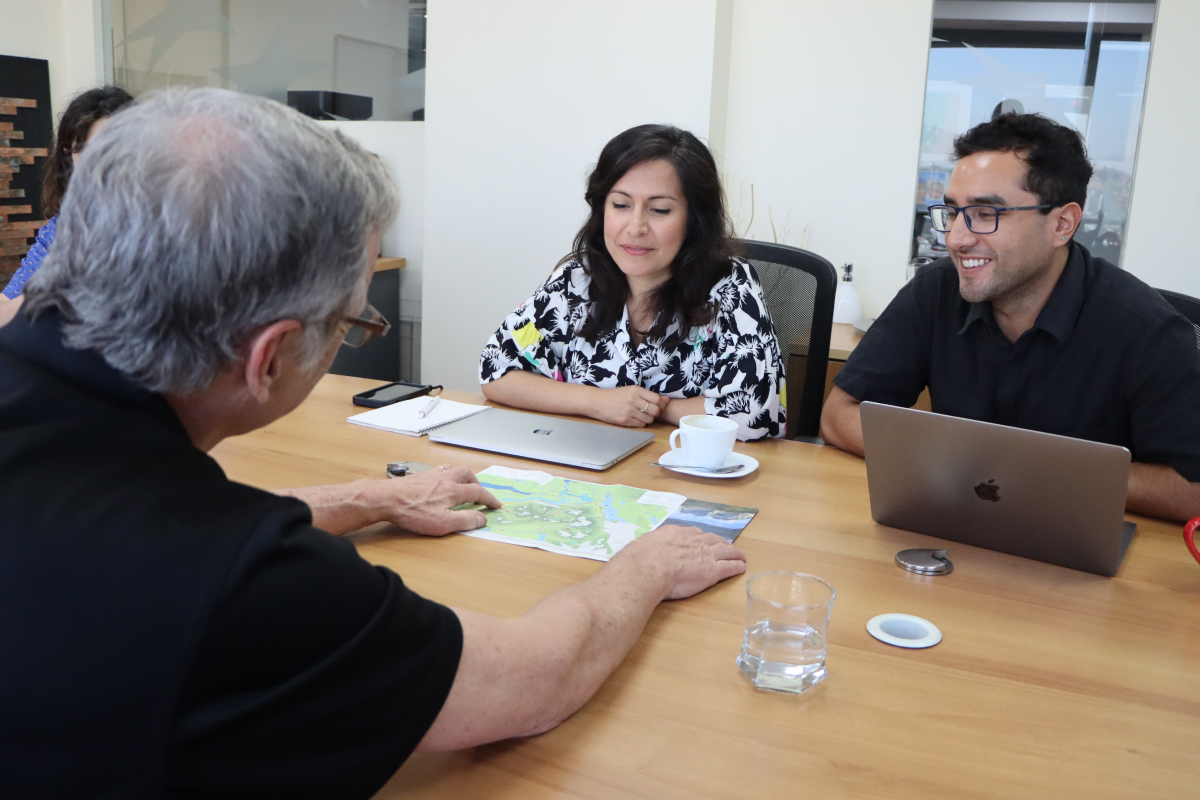The expert in sustainable trail construction arrived in Santiago to meet with various tourism organizations before moving to Torres del Paine to continue fieldwork on a new national park trail.
Santiago of Chile, January 30th, 2024.- To provide a sustainable path that connects with the Base Torres viewpoint in Torres del Paine National Park, multiple groups have collaborated to design a route that minimizes the effects of erosion and considers an intelligent layout that adapts to the climatic and geographical conditions of the area, thereby protecting the ecosystem. In order to spearhead these efforts, Las Torres Patagonia has partnered with the US group ConservationVIP (Conservation Volunteers International Program), whose director, Garry Oye, arrived in Chile on January 22.
Oye holds a bachelor’s and a master’s degree in forestry from the University of Montana in Missoula. He has extensive federal government experience, working in national parks for the United States’ two main land management agencies: the USDA Forest Service and the DOI National Park Service.

With nearly 6 years of experience as a director at ConservationVIP, he is currently leading a team of engineers and technicians from various disciplines in the development of a sustainable trail in Torres del Paine National Park that connects to the Torres Base viewpoint.
During his visit to Santiago, Garry Oye met with various representatives from the tourism industry in Chile. Among them were Jessica Canelo, the Promotion and Marketing Manager of Fedetur, Daniela Montiel, the Director of Strategic Partnerships at the Imagen de Chile Foundation (FICH), and Francisca González, the ESG Analyst of JetSmart. In these instances, he had the opportunity to describe them about the various processes they are carrying out to rebuild the trail and how they can contribute to this mission to improve the conditions of one of the most important national tourism destinations.
Garry Oye explains that for a trail to be sustainable, it must consider a variety of factors during the design and engineering stages. For example, a less steep angle allows footprints on the trail to exert less pressure, while also allowing rainwater to flow away from the trail, reducing erosion to a minimum level.

The ConservationVIP trail expert adds that it is “important for one of Chile’s most traversed trails to have an internationally recognized access route, as hiking enthusiasts worldwide consider Torres del Paine as one of their destinations to fulfill during their vacations. The park must live up to trekking experiences found in the United States, Europe, or any other country.” That is why it is critical to spread the word about the new trail’s impact and value to the community.
Oye then warned about the consequences of not maintaining the trail leading to the Base Torres viewpoint. He stated that the combination of rain and continuous use without maintenance could weaken the route, making it unsafe for visitors and posing an avoidable risk for hikers from all over the world.
Work on the visitor route leading to the viewpoint will continue this season until March 2024, when it will resume after the end-of-year winter retreat.